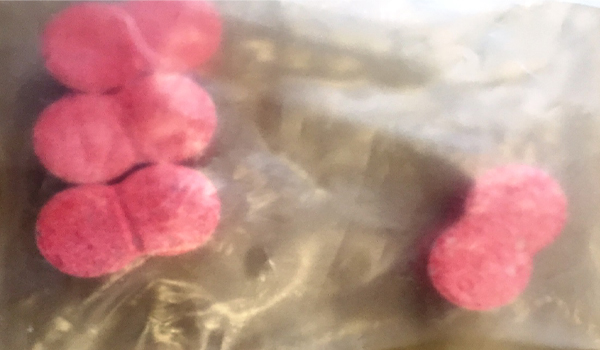Safety appeal launched after girl dies from Mastercard drug reaction
A force has issued an urgent warning to ecstasy users following the death of a girl on Monday, May 2.
A force has issued an urgent warning to ecstasy users following the death of a girl on Monday, May 2.
Faye Allen, 17, collapsed at the Victoria Warehouse nightclub in Manchester in the early hours of Monday morning after suffering an adverse reaction to a form of ecstasy known as Mastercard.
She died in hospital shortly afterwards.
Greater Manchester Police (GMP) has now issued an appeal to warn other people against the dangers of the drug, and is asking for information about where it may have come from.
Detective Inspector Helen Bell said: This is a tragic situation, the death of a young person is always devastating, but in these circumstances it is all the more heart breaking. My thoughts are with her family and friends at this time.
Sadly we know it is very unlikely that the girl was the only person to have taken this drug last night.
We are appealing to anyone who may have urgently taken this form of ecstasy, known as Mastercard, to get checked out urgently. Even if you took it some hours ago, this pill will still be in your system and could be seriously harming your health.
A spokesperson for Victoria Warehouse confirmed it is assisting GMP with the investigation, and as such is unable to comment further.
Two people have been arrested on suspicion of possession with intent to supply a Class A drug, and remain in custody.
The number of deaths caused by ecstasy has increased in recent years. At least 50 were recorded in 2014, up from eight in 2010.
However, it is likely there were more, as a specific substance is not recorded in around a tenth of drug-related coroners death certificates.
And the Office for National Statistics (ONS) found that a total 2,248 people died as a result of illegal drugs in 2014.
Female drug-related mortality rates have increased steadily since 2009, reaching an all-time high of 38.8 deaths per million population in 2014.
Ecstasy usage rates have also increased. Crime Survey for England and Wales data shows that 5.4 per cent of 16 to 24-year-olds admitted to using the drug in 2014/15 1.5 per cent more than in the previous year.
However, because usage rates among this age group have fluctuated over the last two decades, the ONS said it was unclear whether this represented a genuine increase.
At the same time, the purity levels of ecstasy have dramatically risen. The 2015 Street Drug Trends Survey found that certain batches contained nearly two and a half times the standard dose of MDMA (ecstasys main ingredient) per pill, matching purity levels from tablets in the 1990s.
According to Fiona Measham, a professor of criminology at Durham University, ecstasy pills now commonly contain 100mg of MDMA, whereas the average levels in 2009 were just 20-30mg.
Prof Measham said a safe dose for an average-sized adult would be 70-75mg.
The ONS said: This might partially explain the increased number of deaths involving ecstasy.
Four men died last year after taking a highly dangerous batch of ecstasy, which were decorated with a Superman logo.
Investigators believed these had been made with an unusually high concentration of the chemical PMMA, which causes the effects to be released more slowly and can lead to people overdosing as they do not realise the pills are having an impact.
Suffolk Constabulary offered a temporary drug amnesty to anyone who surrendered the tablets, with Superintendent Louisa Pepper saying: Please dont be worried about any prosecution because we just want [the drugs] off the streets.


